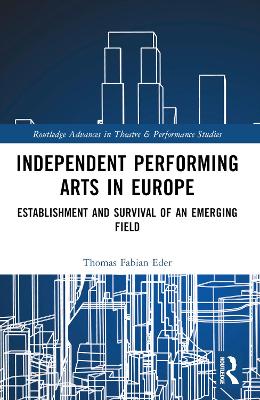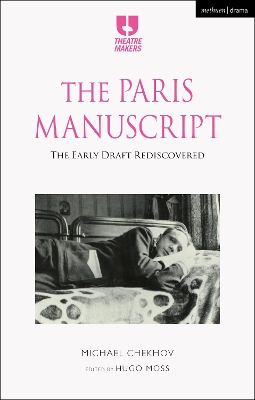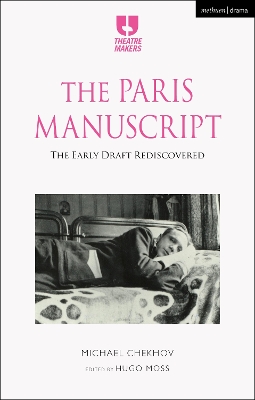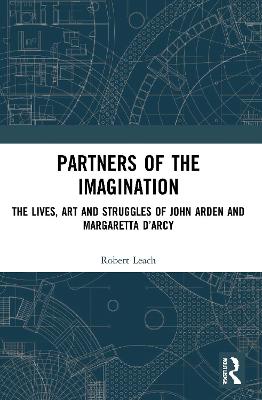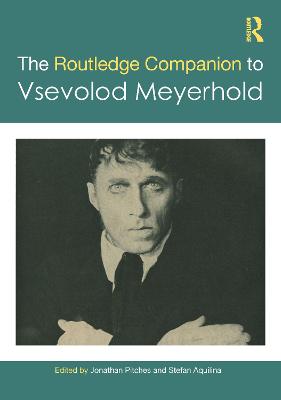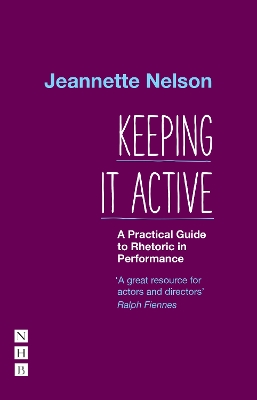Contemporary Rehearsal Practice
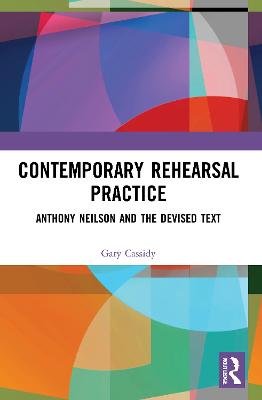 portes grátis
portes grátis
Contemporary Rehearsal Practice
Anthony Neilson and the Devised Text
Cassidy, Gary
Taylor & Francis Ltd
08/2022
200
Mole
Inglês
9780367615574
15 a 20 dias
294
Descrição não disponível.
Content
Acknowledgement
Introduction
Anthony Neilson: An Overview
Introducing the Narrative Rehearsals
Methodology
Book Structure
Part 1: Neilson's Authorial Process
Part Introduction
Chapter 1: Neilson's Authorial Process and the Actors' Input
Case Study 1: Neilson as Author, Blackmail and Murder, and the Authorial Trope of Sound to Portray Psychological Liminality
Case Study 2: The Actor's Indirect Input into Neilson's Convoluted Jigsaw
Case Study 3: Olly Rix, Shakespeare and Superheroes: The Actor's Direct Input
Conclusion
Chapter 2: 'The Footmouse Dance': The Actors' Input into Authorial Tropes and Neilson's Ad-Hoc Approach to Authorship
What's in a Name?: The Naming of Characters as an Authorial Trope in Neilson's Work
Zawe Ashton and the Cancelled Magazine Subscription: The Actor's Direct Input Reconsidered
"Footmouse! Brilliant!": Humiliation as an Authorial Trope in Neilson's Work
Chance and the Arbitrary: Neilson's 'Magpie' Approach to Authorship
Conclusion
Part 2: Neilson's Process and Improvisation
Part Introduction
Chapter 3: Improvisation and Characterisation
'Box Therapy': Uncertain Beginnings with Random Objects
Improvisation and Characterisation via Stanislavskian Principles
Instinct
Mask Work
The Relationship Between Actor and Director: Unproductive Aspects
The Relationship Between Actor and Director: Productive Aspects
Conclusion
Chapter 4: The 'Human Soundscape': Improvisation, Rules and Failure
Uncertain Beginnings with an Absence of Rules
Humour, Rules and Challenging Leadership
Corpsing
Failure as Failure
Play and Catharsis: Therapy for the 'Box Therapy'
Conclusion
Part 3: Directing Actors
Part Introduction
Chapter 5: Neilson the 'Unsafe' Director
Directing and Power: Neilson's Egalitarian Approach
Directing and Power: Neilson's Not Quite So Egalitarian Approach
Power and Communication
'Ask the Audience': The Suggestion of Audience Participation and its Rejection
'Ask the Audience': Not Neilson's Way or the High Way
'What Did You Expect': Neilson Directs the Ending
Conclusion
Chapter 6: Neilson and the Actor's Process
The Stanislavskian Actor's Process
Actors' Heterogeneity
Case Study 1: Neilson's Motivational Speech
The Actor's Process, Emotional Labour and the Reality of Working Conditions
Case Study 2: Press Night
The Importance of Timing for the Actor's Process
Actors' Coping Strategies
Conclusion
Book Conclusion
Index
Acknowledgement
Introduction
Anthony Neilson: An Overview
Introducing the Narrative Rehearsals
Methodology
Book Structure
Part 1: Neilson's Authorial Process
Part Introduction
Chapter 1: Neilson's Authorial Process and the Actors' Input
Case Study 1: Neilson as Author, Blackmail and Murder, and the Authorial Trope of Sound to Portray Psychological Liminality
Case Study 2: The Actor's Indirect Input into Neilson's Convoluted Jigsaw
Case Study 3: Olly Rix, Shakespeare and Superheroes: The Actor's Direct Input
Conclusion
Chapter 2: 'The Footmouse Dance': The Actors' Input into Authorial Tropes and Neilson's Ad-Hoc Approach to Authorship
What's in a Name?: The Naming of Characters as an Authorial Trope in Neilson's Work
Zawe Ashton and the Cancelled Magazine Subscription: The Actor's Direct Input Reconsidered
"Footmouse! Brilliant!": Humiliation as an Authorial Trope in Neilson's Work
Chance and the Arbitrary: Neilson's 'Magpie' Approach to Authorship
Conclusion
Part 2: Neilson's Process and Improvisation
Part Introduction
Chapter 3: Improvisation and Characterisation
'Box Therapy': Uncertain Beginnings with Random Objects
Improvisation and Characterisation via Stanislavskian Principles
Instinct
Mask Work
The Relationship Between Actor and Director: Unproductive Aspects
The Relationship Between Actor and Director: Productive Aspects
Conclusion
Chapter 4: The 'Human Soundscape': Improvisation, Rules and Failure
Uncertain Beginnings with an Absence of Rules
Humour, Rules and Challenging Leadership
Corpsing
Failure as Failure
Play and Catharsis: Therapy for the 'Box Therapy'
Conclusion
Part 3: Directing Actors
Part Introduction
Chapter 5: Neilson the 'Unsafe' Director
Directing and Power: Neilson's Egalitarian Approach
Directing and Power: Neilson's Not Quite So Egalitarian Approach
Power and Communication
'Ask the Audience': The Suggestion of Audience Participation and its Rejection
'Ask the Audience': Not Neilson's Way or the High Way
'What Did You Expect': Neilson Directs the Ending
Conclusion
Chapter 6: Neilson and the Actor's Process
The Stanislavskian Actor's Process
Actors' Heterogeneity
Case Study 1: Neilson's Motivational Speech
The Actor's Process, Emotional Labour and the Reality of Working Conditions
Case Study 2: Press Night
The Importance of Timing for the Actor's Process
Actors' Coping Strategies
Conclusion
Book Conclusion
Index
Este título pertence ao(s) assunto(s) indicados(s). Para ver outros títulos clique no assunto desejado.
Narrative Rehearsals;Published Play Text;Neilson's authorial process;Box Therapy;Anthony Neilson's unconventional rehearsal methodology;Alex Mermikides;Box Therapy improvisation;Interview Testimony;theatre performance;Rehearsal Room;Workshops;Authorial Trope;Aleks Sierz;Press Night;Pro-filmic Event;Eleventh Hour;Stanislavskian Approach;Roger Dean;Default Mode Network;Rehearsal Process;Technical Rehearsal;Clip;Contemporary Theatre Practice;Theatre Royal Stratford East;Wooster Group;Moody Teenager;Indirect Input;Neutral Mask;Ian Brown
Content
Acknowledgement
Introduction
Anthony Neilson: An Overview
Introducing the Narrative Rehearsals
Methodology
Book Structure
Part 1: Neilson's Authorial Process
Part Introduction
Chapter 1: Neilson's Authorial Process and the Actors' Input
Case Study 1: Neilson as Author, Blackmail and Murder, and the Authorial Trope of Sound to Portray Psychological Liminality
Case Study 2: The Actor's Indirect Input into Neilson's Convoluted Jigsaw
Case Study 3: Olly Rix, Shakespeare and Superheroes: The Actor's Direct Input
Conclusion
Chapter 2: 'The Footmouse Dance': The Actors' Input into Authorial Tropes and Neilson's Ad-Hoc Approach to Authorship
What's in a Name?: The Naming of Characters as an Authorial Trope in Neilson's Work
Zawe Ashton and the Cancelled Magazine Subscription: The Actor's Direct Input Reconsidered
"Footmouse! Brilliant!": Humiliation as an Authorial Trope in Neilson's Work
Chance and the Arbitrary: Neilson's 'Magpie' Approach to Authorship
Conclusion
Part 2: Neilson's Process and Improvisation
Part Introduction
Chapter 3: Improvisation and Characterisation
'Box Therapy': Uncertain Beginnings with Random Objects
Improvisation and Characterisation via Stanislavskian Principles
Instinct
Mask Work
The Relationship Between Actor and Director: Unproductive Aspects
The Relationship Between Actor and Director: Productive Aspects
Conclusion
Chapter 4: The 'Human Soundscape': Improvisation, Rules and Failure
Uncertain Beginnings with an Absence of Rules
Humour, Rules and Challenging Leadership
Corpsing
Failure as Failure
Play and Catharsis: Therapy for the 'Box Therapy'
Conclusion
Part 3: Directing Actors
Part Introduction
Chapter 5: Neilson the 'Unsafe' Director
Directing and Power: Neilson's Egalitarian Approach
Directing and Power: Neilson's Not Quite So Egalitarian Approach
Power and Communication
'Ask the Audience': The Suggestion of Audience Participation and its Rejection
'Ask the Audience': Not Neilson's Way or the High Way
'What Did You Expect': Neilson Directs the Ending
Conclusion
Chapter 6: Neilson and the Actor's Process
The Stanislavskian Actor's Process
Actors' Heterogeneity
Case Study 1: Neilson's Motivational Speech
The Actor's Process, Emotional Labour and the Reality of Working Conditions
Case Study 2: Press Night
The Importance of Timing for the Actor's Process
Actors' Coping Strategies
Conclusion
Book Conclusion
Index
Acknowledgement
Introduction
Anthony Neilson: An Overview
Introducing the Narrative Rehearsals
Methodology
Book Structure
Part 1: Neilson's Authorial Process
Part Introduction
Chapter 1: Neilson's Authorial Process and the Actors' Input
Case Study 1: Neilson as Author, Blackmail and Murder, and the Authorial Trope of Sound to Portray Psychological Liminality
Case Study 2: The Actor's Indirect Input into Neilson's Convoluted Jigsaw
Case Study 3: Olly Rix, Shakespeare and Superheroes: The Actor's Direct Input
Conclusion
Chapter 2: 'The Footmouse Dance': The Actors' Input into Authorial Tropes and Neilson's Ad-Hoc Approach to Authorship
What's in a Name?: The Naming of Characters as an Authorial Trope in Neilson's Work
Zawe Ashton and the Cancelled Magazine Subscription: The Actor's Direct Input Reconsidered
"Footmouse! Brilliant!": Humiliation as an Authorial Trope in Neilson's Work
Chance and the Arbitrary: Neilson's 'Magpie' Approach to Authorship
Conclusion
Part 2: Neilson's Process and Improvisation
Part Introduction
Chapter 3: Improvisation and Characterisation
'Box Therapy': Uncertain Beginnings with Random Objects
Improvisation and Characterisation via Stanislavskian Principles
Instinct
Mask Work
The Relationship Between Actor and Director: Unproductive Aspects
The Relationship Between Actor and Director: Productive Aspects
Conclusion
Chapter 4: The 'Human Soundscape': Improvisation, Rules and Failure
Uncertain Beginnings with an Absence of Rules
Humour, Rules and Challenging Leadership
Corpsing
Failure as Failure
Play and Catharsis: Therapy for the 'Box Therapy'
Conclusion
Part 3: Directing Actors
Part Introduction
Chapter 5: Neilson the 'Unsafe' Director
Directing and Power: Neilson's Egalitarian Approach
Directing and Power: Neilson's Not Quite So Egalitarian Approach
Power and Communication
'Ask the Audience': The Suggestion of Audience Participation and its Rejection
'Ask the Audience': Not Neilson's Way or the High Way
'What Did You Expect': Neilson Directs the Ending
Conclusion
Chapter 6: Neilson and the Actor's Process
The Stanislavskian Actor's Process
Actors' Heterogeneity
Case Study 1: Neilson's Motivational Speech
The Actor's Process, Emotional Labour and the Reality of Working Conditions
Case Study 2: Press Night
The Importance of Timing for the Actor's Process
Actors' Coping Strategies
Conclusion
Book Conclusion
Index
Este título pertence ao(s) assunto(s) indicados(s). Para ver outros títulos clique no assunto desejado.
Narrative Rehearsals;Published Play Text;Neilson's authorial process;Box Therapy;Anthony Neilson's unconventional rehearsal methodology;Alex Mermikides;Box Therapy improvisation;Interview Testimony;theatre performance;Rehearsal Room;Workshops;Authorial Trope;Aleks Sierz;Press Night;Pro-filmic Event;Eleventh Hour;Stanislavskian Approach;Roger Dean;Default Mode Network;Rehearsal Process;Technical Rehearsal;Clip;Contemporary Theatre Practice;Theatre Royal Stratford East;Wooster Group;Moody Teenager;Indirect Input;Neutral Mask;Ian Brown

